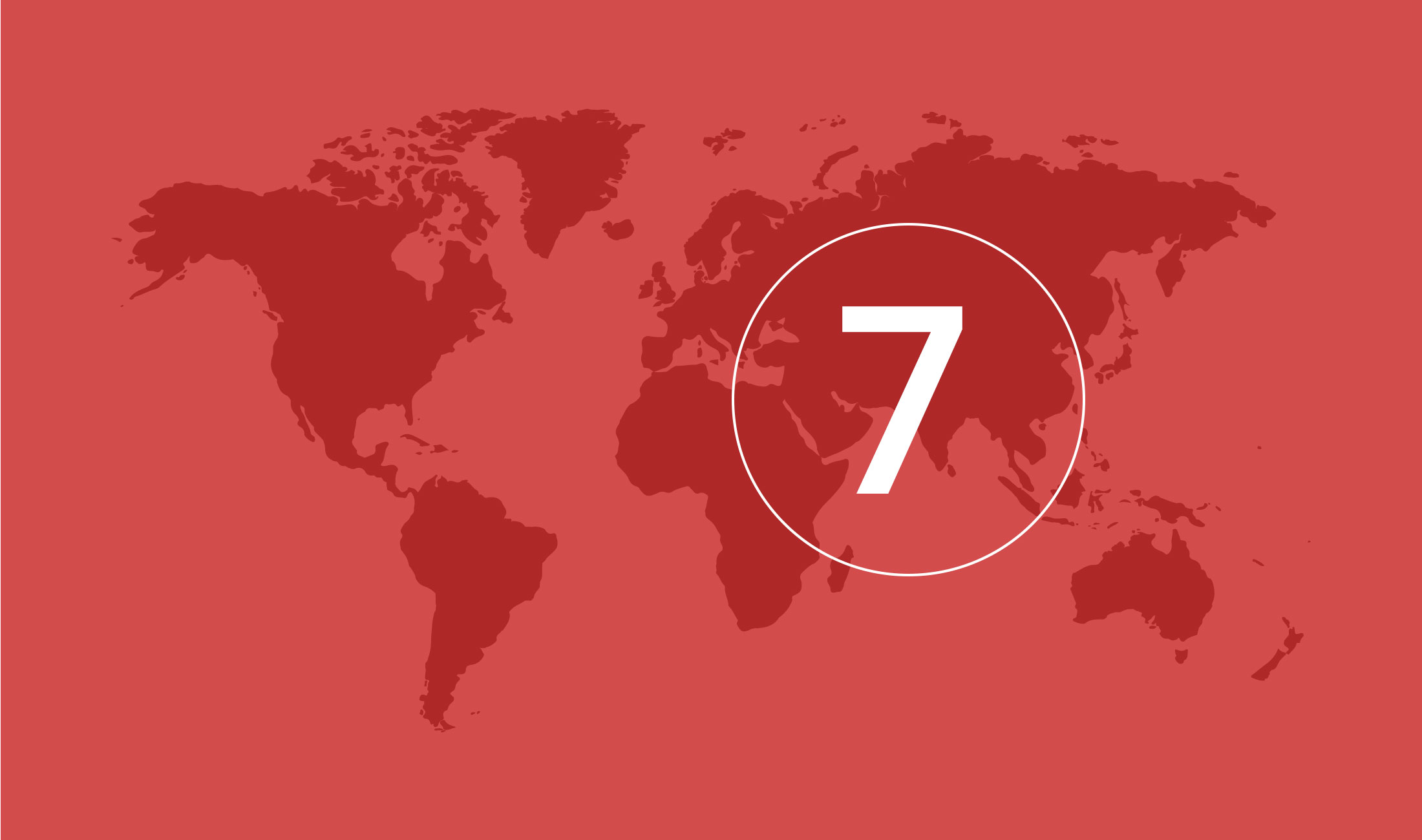
Ethiopia
Category
7
- 0
- 1
- 2
- 3
- 4
- 5
- 6
- 7
| Risk type | Short | Long |
|---|---|---|
| Sovereign |

|

|
| Public |

|

|
| Bank |

|

|
| Corporate |

|

|
The icons indicate EKN's risk assessment.

No policy established

Normal risk assessment

Restrictive risk assessment

Normally off cover

OECD or EU countries
Country risk analysis
Country risk analysis archive
Country Risk Analysis of Ethiopia
The latest Country Risk Analysis of Ethiopia was issued in June 2024.
Background
High economic growth rates, averaging a little over 9 per cent a year over the past decade, have long been Ethiopia’s absolute strength. Growth is driven by large infrastructure investments financed by foreign loans and direct investment. The high rate of growth means that government debt has been able to be kept at an admittedly high, but relatively stable level in relation to GDP. The risk profile, on the other hand, is dominated by extensive external financing needs and low external liquidity.
Ethiopia’s fundamental problem is low hard currency earnings which, combined with the central bank’s currency interventions and the country’s large import needs, leads to a chronic shortage of hard currency. The export sector accounts for less than 10 per cent of GDP, with a consequent substantial current account deficit, low hard currency earnings and a high debt service ratio. According to the IMF/World Bank, there is high risk of debt distress, which means that Ethiopia has a zero limit on new loans on commercial terms (non-concessional loans).
The country’s public institutions are weak, leaving limited capacity to handle high levels of public debt and large external payment obligations. According to the World Bank’s Worldwide Governance Indicators (WGIs), in terms of institutional effectiveness, the country is ranked in the bottom third worldwide. In addition, the large agricultural sector, especially coffee production, is vulnerable to climate change. The low level of income and weak institutions mean limited capacity to prevent risks such as droughts, floods and fires. That said, as the country’s energy supply relies almost exclusively on hydropower, there is limited need for a transition to renewable energy.
Ethiopia is an ethnically divided country experiencing a number of regional conflicts. A civil war between government forces and the Tigray People’s Liberation Front (TPLF) between 2020 and 2022 briefly spread from Tigray province to the capital, Addis Ababa. A peace treaty signed in November 2022 has largely been honoured but thus far has only been partially implemented. The underlying conflicts remain unresolved. The current prime minister, Abiy Ahmed, was elected in 2018 and reelected in 2021. While Ahmed has initiated economic reforms, including privatisation, these have largely stalled due to a financial crisis and domestic conflicts within the country. The next presidential election will be held in 2026.
Waiting for the IMF
According to official statistics, despite the financial crisis, severe shortage of hard currency and civil war, the Ethiopian economy remains one of the fastest growing in the world. During the period 2024–2026, the economy is expected to grow by an average of 7 per cent per year, thanks to falling inflation, likely support form the IMF and gradual privatisation. Growth will however begin from a low base and will largely be driven by government consumption and investment, making it undynamic.
Due to the difficult investment climate, foreign direct investment is expected to decline to an average of approximately 2 per cent of GDP over the next three years, compared to 4 per cent in the period 2017–2019. There is however some light at the end of the tunnel with regard to future growth. In March 2024, the Ministry of Mines announced the discovery of significant gold deposits in several regions of the country amounting to 517 tonnes, which will make a positive contribution to the economy and hard currency earnings over the next few years.
Similar to most African economies, inflation is forecast to fall in the coming years, from just over 25 per cent in 2024 to 14 per cent in 2026. In April 2024, the government opened up the agricultural sector to foreign investment, a sector that accounts for 80 per cent of all export revenue. Foreign investors can now trade in green coffee, Ethiopia’s most important export. Steps have also been taken to open up the telecommunications, banking and real estate markets to foreign competition.
While the Ethiopian currency, the birr, continues to gradually weaken against the US dollar, thanks to strict foreign exchange controls, the decline is slowing. During 2023, it fell only a few percentage points despite the still severe shortage of hard currency. On the parallel market, the birr has traded at almost double the official exchange rate during 2023/24, implying that the currency is seriously overvalued. Devaluation is almost certainly on the cards should Ethiopia succeed in securing an IMF lending programme.
There is no up-to-date information on the size of the central bank’s international reserves, but according to the latest statistics from the IMF (2022), they cover only a few months of imports. It is highly likely that reserves dwindled further during 2023, meaning that the level is now critically low. Due to the increasingly severe shortage of hard currency, EKN introduced a requirement for letters of credit as a means of payment for corporate risks in June 2023.
Ethiopia’s public finances remain in crisis. In December 2023, the country defaulted on its Eurobond payment. The fundamental problem remains external liquidity rather than solidity. Economic growth in combination with moderate budget deficits and stagnant external borrowing will see public debt and external debt decrease as a percentage of GDP over the coming years. It is anticipated that in 2025, public debt will be less than 30 per cent of GDP, which is a low level for country risk class 7.
Addressing external liquidity problems will require support from the IMF and debt restructuring. Negotiations ground to a halt during the Tigray conflict but have regained some momentum during 2023/24. The first step is an IMF extended credit facility arrangement that Ethiopia hopes to secure during 2024. The second step is to restructure the country’s debts, something that is also likely to occur in 2024. These negotiations will be complicated by the mix of creditors, with approximately half of the external debt held by China.
In recent years, negotiations on restructuring bilateral debt have generally become increasingly protracted in emerging markets. This is mainly due to changes in the creditor mix, with domestic creditors, Eurobond investors and China demanding a greater say at the negotiating table. In November 2023, Ethiopia was granted temporary debt relief for 2023/24 pending the larger debt renegotiation.
Both sides continue to honour the agreement between the Ethiopian Government and the TPLF, though the peace is fragile. The agreement was due to be implemented in full by June 2024, including the withdrawal of all federal forces, but this has only been partially accomplished. In 2023, attention has shifted to clashes in Amhara between government troops and the Fano militia. The conflict, which is fundamentally about Amhara’s influence within the federation, intensified in April 2023 when the federal government decided to disarm regional and paramilitary forces in Amhara.
The fighting has caused significant disruption, including to regional transport, and could potentially destabilise Ethiopia in much the same way as the civil war in Tigray. The government is also dealing with a diplomatic dispute with neighbour Somalia over Ethiopia’s decision to sign an agreement with Somaliland – a breakaway region claiming independence from Somalia – for the use of the port in Berbera. Given the civil war raging in Sudan to the west and the diplomatic dispute with Somalia to the east, Ethiopia finds itself in a region that is more turbulent than it has been for many years.
Business environment
Lack of hard currency liquidity is a key obstacle for companies and banks. All hard currency allocation is done through the central bank, the National Bank of Ethiopia (NBE). Each bank has an assigned limit as well as a priority list of sectors. Companies must immediately exchange 50 per cent of hard currency earnings with the NBE through their own bank and an additional 10 per cent with the bank, meaning that companies are only permitted to retain 40 per cent of their hard currency earnings.
There is no interbank currency market. The state-owned Commercial Bank of Ethiopia controls two-thirds of the financial sector and is generally perceived to have priority over other banks in terms of hard currency. There is generally a high degree of state intervention in the business environment, with public interests often prioritised over private interests. Bureaucracy is extensive and corruption high in a global context.
The country’s WGI percentile rank for institutional effectiveness has remained virtually unchanged over the last decade. The country’s percentile rank for control of corruption (37) is somewhat better than for other indicators, while its rank for regulatory quality is significantly worse (17). High inflation is a challenge for businesses and banks. Civil conflicts also have a direct negative impact on the business environment. The main source of concern at present is the unrest in Amhara, where roadblocks are hindering transport.
Despite the peace agreement, there is also an elevated risk in Tigray. In summary, Ethiopia’s large and largely underdeveloped market continues to engender interest among foreign exporters and investors keen to position themselves for future privatisations, which appear to be within reach. Meanwhile, Ethiopia remains a market with great and unrealised potential.
EKN’s policy
Due to the poor state of public finances and restrictions on sustainable lending, EKN does not cover long-term payment risks on public buyers. The same policy applies to company- and bank risks. For short risk periods (<1 year) with public buyers, a letter of credit or bank guarantee is required. The same policy applies to company risks where a letter of credit (confirmed or unconfirmed) is required.
EKN’s commitment and experience
EKN has a relatively large volume of outstanding guarantees in Ethiopia, almost exclusively sovereign risk in the energy and transport sectors. EKN also issues approximately ten letter of credit guarantees each year. During 2024 demand has increased for smaller, short-term transactions with unconfirmed letters of credit, especially in the paper industry. While the Commercial Bank of Ethiopia dominates the flow of letter of credit guarantees, a handful of smaller banks account for unconfirmed letters of credit.
EKN:s payment experience is good. In November 2023, Ethiopia was granted temporary debt relief for 2023/24 pending debt restructuring, which for EKN triggers indemnifications in the transport sector. EKN is thus directly affected by the Ethiopian government’s lack of fiscal resources and hard currency problems. During the period 1992–2004, Ethiopia had five Paris Club agreements, all of which involved debt write-offs.
More for companies that want to export to Ethiopia

EKN's guarantees
EKN's guarantees reduce the risk of payment defaults and help banks support businesses. Which guarantee suits your needs?
EKN's guarantees
Guarantee guide
Are you unsure which guarantee is the best fit for your specific transaction? Try our guarantee guide.
Guarantee guide